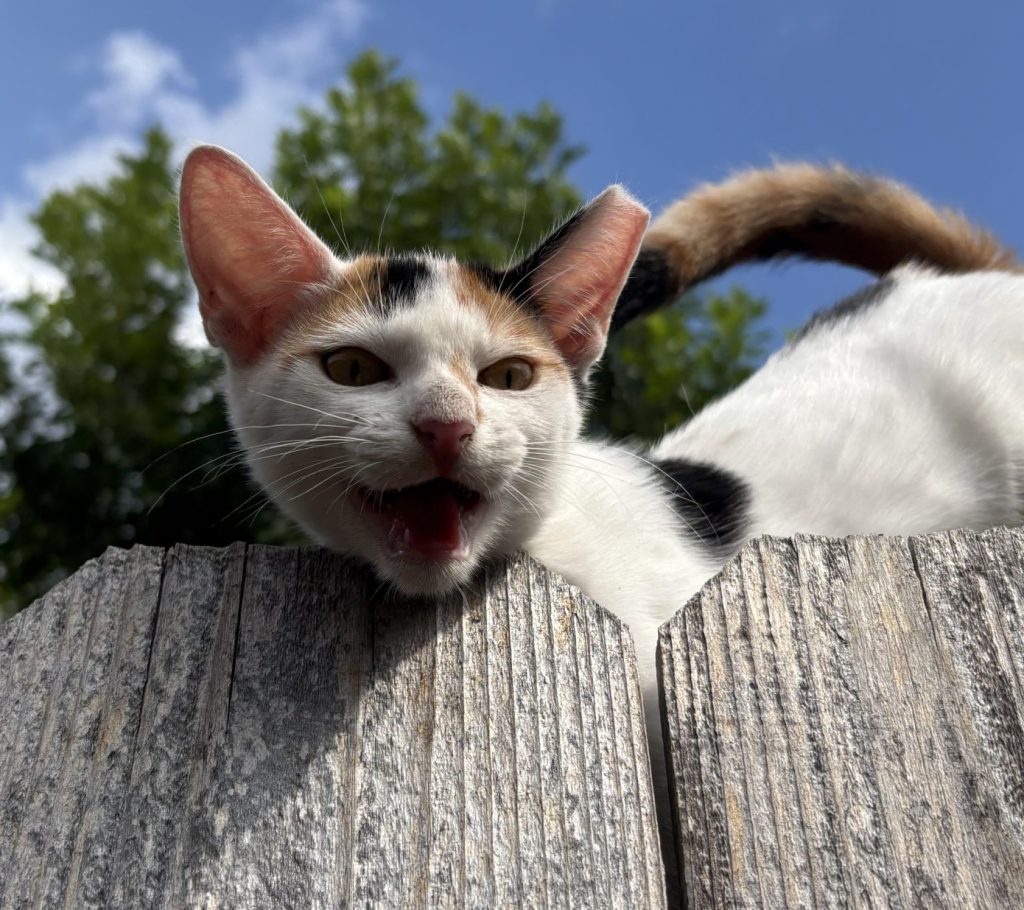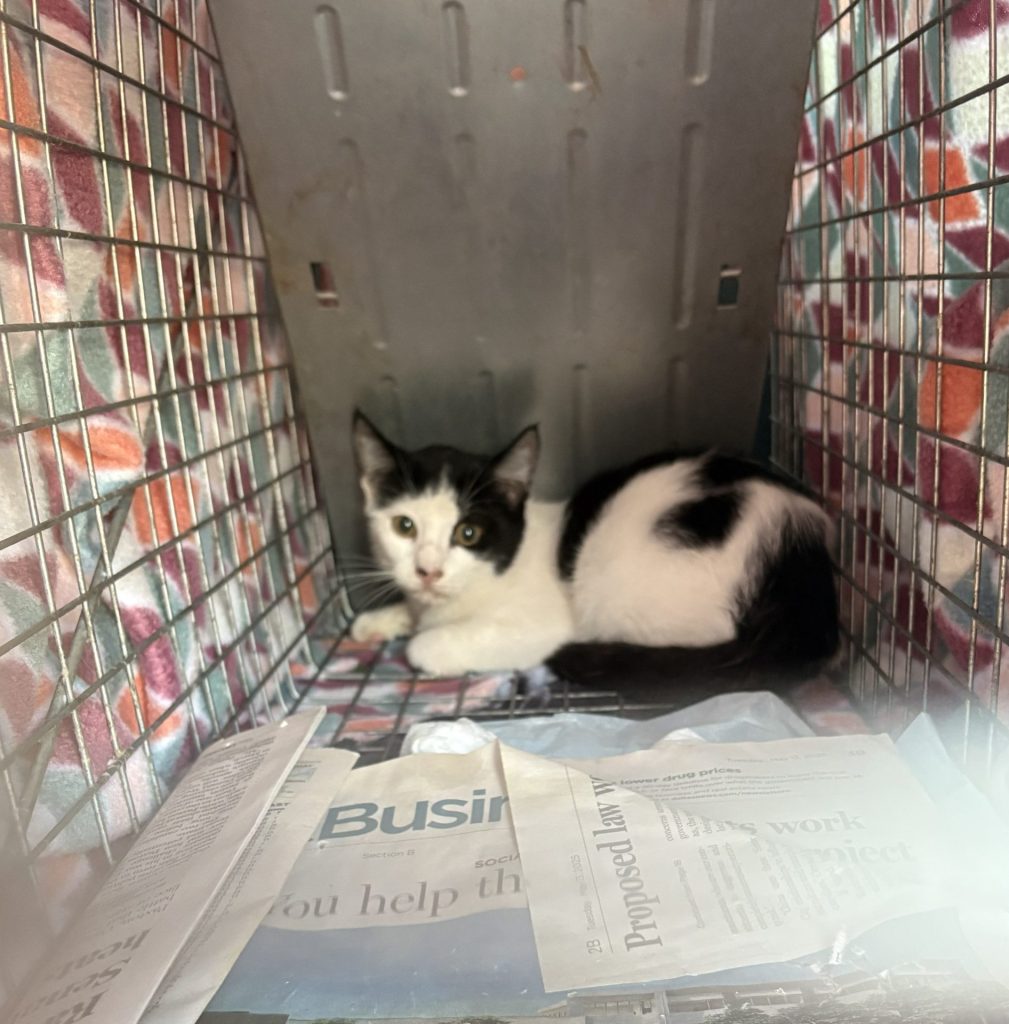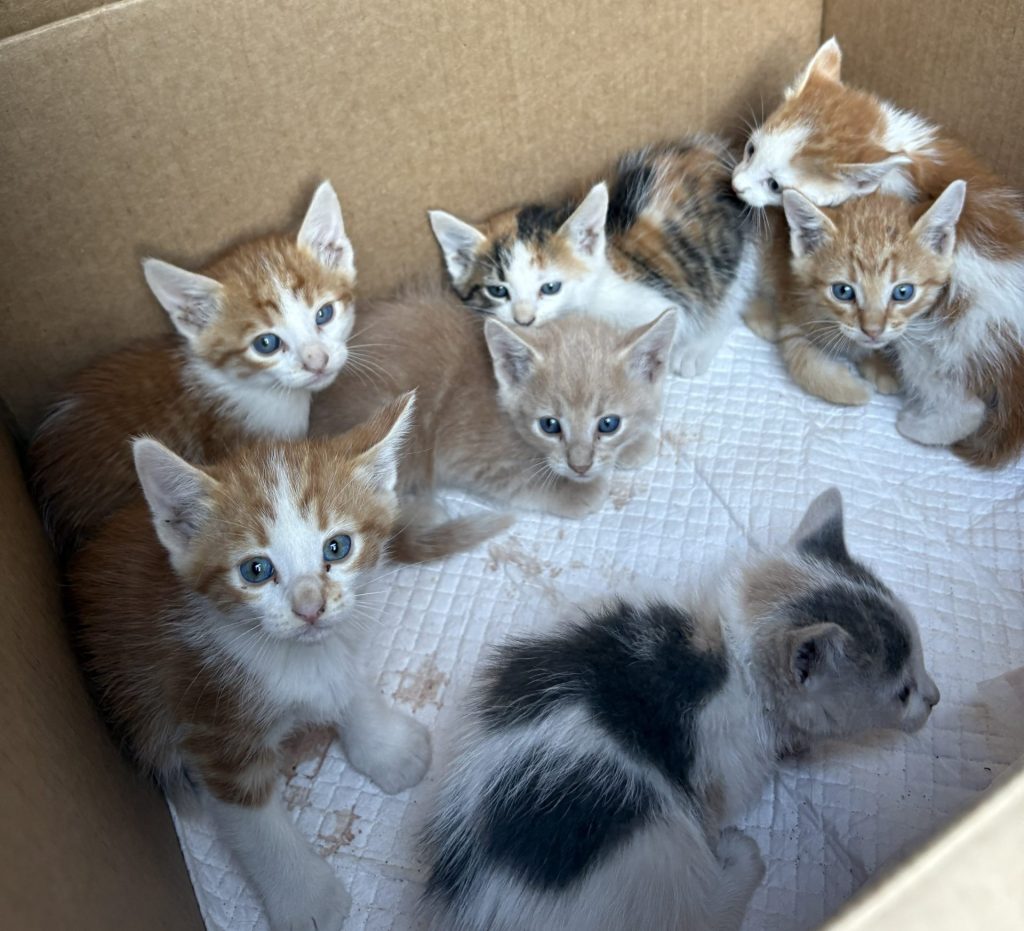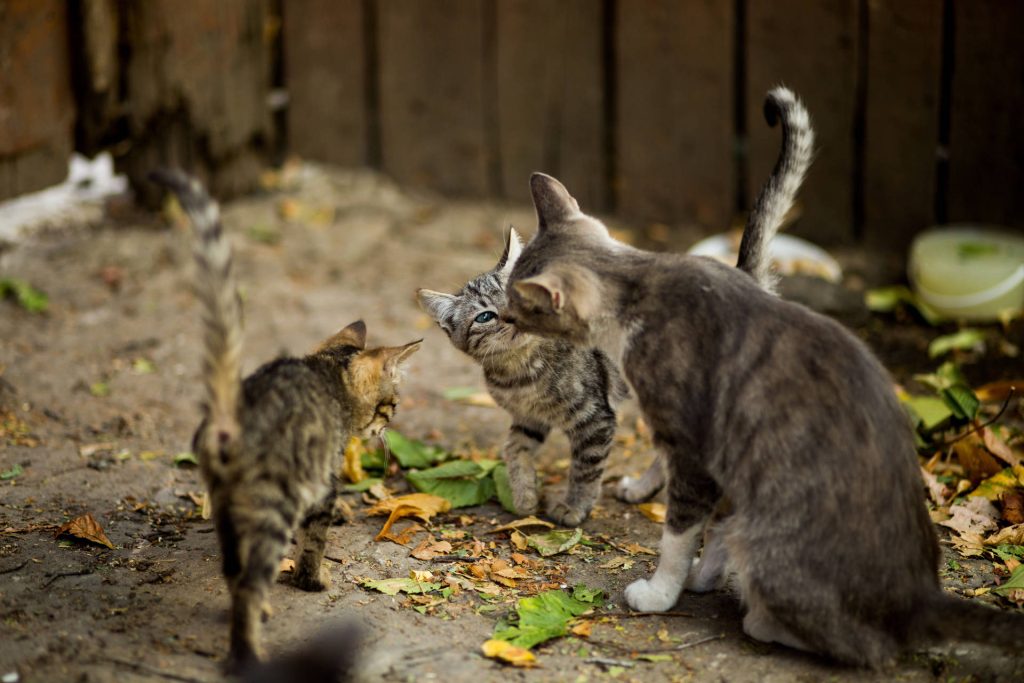Community Cat Day is a great opportunity to raise awareness about the humane management of outdoor cat populations through Trap-Neuter-Return. Community cats—also known as feral, unowned, or free-roaming cats—often live in colonies and may or may not be socialized to humans. Left unaltered, these cats can reproduce rapidly, leading to overpopulation, suffering, and strain on local shelters.
Trap-Neuter-Return is the most effective and compassionate method for managing these populations. It involves humanely trapping cats, having them spayed or neutered, vaccinated, and then returning them to their original location. This approach not only prevents the birth of more kittens but also stabilizes the colony and improves the overall health of all of the cats.
Don’t Be a Feeder Breeder

If you have outdoor cats in your neighborhood, don’t be a feeder breeder! Help the long-term health of the cats and the colony by learning about the Trap-Neuter-Return program. We understand the desire to feed community cats, but there is a better and more responsible way to help them.
A cat who has already been fixed as part of a Trap-Neuter-Return program will have the tip of their left ear cleanly snipped. If their ears are intact, they are candidates for neutering. Kittens in the colony need to be at least three months old and weigh at least three pounds to have the best chance to thrive after surgery and release. It is also important to wait to trap a nursing female cat until after her kittens have weaned, around 8 weeks post-partum. Waiting those critical weeks helps the mom cats have an easier and more complete recovery post surgery.
The Trapping Part of Trap-Neuter-Return
If you are renting traps from the ASPCA, they will provide full instructions on how to use them but if you are using your own traps, here is some guidance. If you want to connect with someone from Dallas Pets Alive to see how to get started or how you can help, just click here!
Appropriate traps should measure between 30”- 36” L x 10” W x 12” H. Line the trap with newspaper or pee pads and the food you regularly feed them, placed at the far end of the trap, beyond the trigger plate. If the cats are wary, you can skip feeding them for the day before so that they are hungry and more amenable to entering the trap to get a belly full.
Check here for information on Trap-Neuter-Return programs in your area. You should make an appointment for the cats the day before you set out your traps and then hold them overnight in a safe place.
The best times to trap cats are early morning, dusk, or the normal times you see and feed them. Keep an eye on your trap, especially if it is hot, or cold, or other inclement weather and never leave a trap overnight.
The Neuter Part of Trap-Neuter-Return
Under no circumstances should you try to handle a cat in a trap. Be sure both doors are securely closed and cover the trap with a blanket or large towel to keep your fingers safe as well as a way to keep the cat calm. Bring the cat inside to a basement, bathroom, garage, or enclosed porch overnight where they will be comfortable.
On the morning of your appointment, place the trap on an old blanket or newspaper in your car where it is not in danger of rolling over and take the cat to the participating veterinarian for their surgery.

Now for the Return
The day after the surgery, you will receive post-op care information. For males, they can generally be released immediately, whereas females should remain in the trap in a safe place for 24 hours more.
It is vitally important that you release the cats in the same place you trapped them to minimize stress and risk to the cat.
A Purrfect Day To Recognize the Efforts of Trap-Neuter-Release Volunteers

Community Cat Day not only celebrates the dedication of volunteers, rescue groups, and veterinarians who make this program successful, but It’s also a call to action for more people to get involved—whether by volunteering, donating, or simply spreading the word. Every spay or neuter surgery performed helps prevent countless future litters and reduces the burden on animal shelters.
By supporting Trap-Neuter-Return efforts, communities can create a more harmonious environment for both cats and people. It’s a win-win: cats live healthier lives, and neighborhoods experience fewer issues related to overpopulation.
Community Cat Day reminds us that compassion and collaboration can make a lasting difference.



